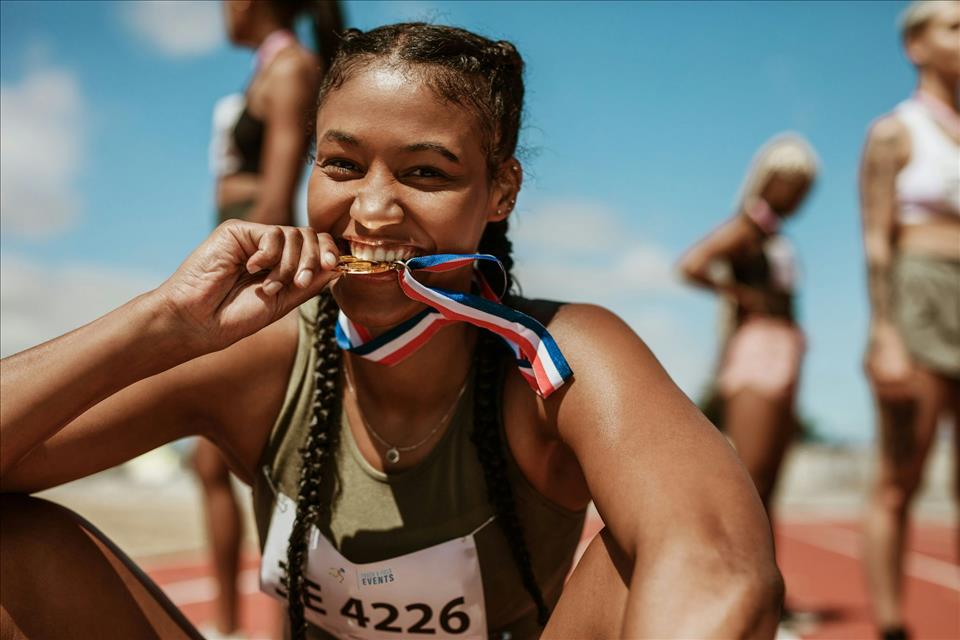
Olympics 2024 Shows The Untapped Potential Of Female Athletes
The rates of improvements in female athletic performance appear to be exceeding that of their male counterparts. For example, between 1985-2004 the records of female marathon runners improved at a rate three times greater than men's. This has led many people to question whether, despite a 10-12% performance gap in all distance sports, women may surpass men at endurance sports in the future.
However, due to inequalities in sport the profile, funding and research related to women's sport is lacking. The charity Women in Sport suggest this“reflects a wider bias within society”. Out of £35 million the UK government invested into football the women's game received £3 million in the 2022-23 financial year.
Back in 2012 the UK-based Women's Sport and Fitness Foundation argued that women's sport was“sidelined, underfunded and ignored”, with their research also suggesting that women's sport received only 0.5% of all commercial sponsorship. Over ten years later there remains a substantial funding gap. A 2023 report commissioned by a woman's sport and entertainment collective which found that 90% of sponsorships still go to men's sport .
And a 2023 study by Women in Sport found this lack of funding has a marked impact on career choices with less than 29% of girls and young women aged 13-24 saying they dream of reaching the top in sport compared to over 50% of boys and young men. The report showed this can change with increased visibility of women's sport. The number of girls who said they love sport and take part often rose from 50% in 2020 to 69% after the Lionesses' Euro win in 2022 .
Lack of researchThe lack of money within women's sport not only affects athletes directly but also has other implications in terms of research and its application to performance. Research advancements within sport have been pushing the boundaries of what is possible for the human body. New records in sport can often be attributed to the sport science advancements that help athletes to bolster their physical capabilities, aid recovery and rehabilitation and develop their mental strength.
But there is a major problem, nearly all of this research is focused on men with as little as 6% of all sport research using female only participants.
The majority of stakeholders in positions of power within sport who make decisions are predominantly men such as national governing bodies of sport, with control over where funding goes.
Of even greater concern is the fact that research conducted on men is being used to explain female athletic performance when women are biologically, physiologically and psychologically different to men.
For example, research into VO2 max capabilities (the maximum rate of oxygen your body can use during exercise) have allowed endurance athletes to reach performance feats previously thought to be impossible. However most VO2 max research is based on men and little is known about sex differences.
Researchers in 2022 , reviewing the evidence we do have of VO2 max differences between men and women, concluded that female athletes are being held back by a lack of scientific understanding of female physiology.
But with additional research and the development of more female specific approaches there is no telling the improvements that could be made to female performance. For instance, the 2022 VO2 max review pointed to studies showing women have some advantages such as superior fatigue resistance .
Researchers often point to the fact that studies with women have to control for more factors. Scientists have noted how the fluctuations of hormones at different stages of the menstrual cycle as well as menstruation itself present complications when conducting research. Yet, this challenge simply demonstrates how little we understand about female athletes.
Sport as a career becomes even more difficult should female athletes wish to become mothers. This is particularly a problem in sports where peak performance age coincides with peak fertility.
Research by one of the our team, (Candice Lingam-Willgoss), with several elite athletes who had become mothers during their elite careers and returned at the same level suggested there is a lack of knowledge within sports when it came to supporting pregnant and post-partum athletes. Traditionally this has resulted in many female athletes retiring before they have had the chance to reach their optimum performance.
Society does seem to be changing and six Team GB athletes who are mothers are competing in the 2024 Olympic Games. Paris 2024 is the first Olympic Games to provide a nursery and accommodate breastfeeding athletes. And this year there are equal numbers of male and female athletes for the first time. With more athletes talking about their experiences as mothers, such as Jessica Ennis-Hill and Serena Williams , it seems some progress is being made.
Read more: Does a woman's menstrual cycle affect her athletic performance? Here's what the science says
We need to consider what is possible.
Talk at this year's Paris games has highlighted several female athletes who are likely to break records , including 200m sprinter Shericka Jackson from Jamaica tipped to break Flo-Jo's (Florence Griffith-Joyner) 36 year record. Australian swimmer Kaylee McKeown has already set a new Olympic record for the 100 metre backstroke and Australian swimmer Mollie O'Callaghan has set a new 200m freestyle Olympic record.
Imagine what potential could be unlocked if we adopted female-centric approaches to training, recovery and mental preparation.

Legal Disclaimer:
MENAFN provides the
information “as is” without warranty of any kind. We do not accept
any responsibility or liability for the accuracy, content, images,
videos, licenses, completeness, legality, or reliability of the information
contained in this article. If you have any complaints or copyright
issues related to this article, kindly contact the provider above.


















Comments
No comment